Some Photography Terms You Should Know in 2026
Last Updated on January 16, 2025

You're likely to hear these words from your fellow photographers, but what do they mean?
Bokeh, deadpan, chimping. What do these three words have in common? While they may not mean much to the average person, many experienced photographers will be familiar with them. Photographic terms and definitions can be difficult for beginners, and you have to keep asking them back, which makes you feel uncomfortable. It's as if you're speaking different languages with the person you're talking to. But don't worry, even experienced photographers can find it difficult to keep up with the ever-evolving terminology!
Here’s a rundown of the most commonly used photography words and terms from popular searches. You’ll likely to hear a number of these photography terms during the course of your artistic pursuits. Knowing these terms will help you feel more confident when speaking with other photographers. So sit back and get ready to dive into the exciting world of photography.
Basic Photography Terms
The first thing we will focus on are the basic photography terms that you should know.
Digital and optical
When buying a new camera, users may be faced with the question of which one to choose - digital or optical? The difference between the two is that a digital camera achieves results with software, whereas an optical camera with its physical parts. For professional use, it is better to choose an optical camera, but if you're not planning to use the camera professionally, you can choose a good alternative from the digital models.
File format
The file format is the image data recorded by the camera. Formats differ according to how images are structured. Due to their variety, it is possible to easily edit images in different processing programs.
Viewfinder
The viewfinder is the hole through which the photographer looks to take the picture. Some digital cameras do not have a viewfinder, but most DSLR and mirrorless cameras do.
Photography terms that relate to images
People often use photography jargon when describing something they see in a photograph – a style, a type of light, or even the process of creating the image.
Bokeh
Bokeh traditionally refers to the blur in the background of an image, although it can also refer to the blurred part of the foreground. While many photographs have an out of focus part, in those with bokeh, this part is aesthetically pleasing; more often than not, these photos are taken with an aperture of f/2.8 or wider. "Bokeh balls” refer to the lights in the out-of-focus parts of the image, often forming the appearance of glowing balls.
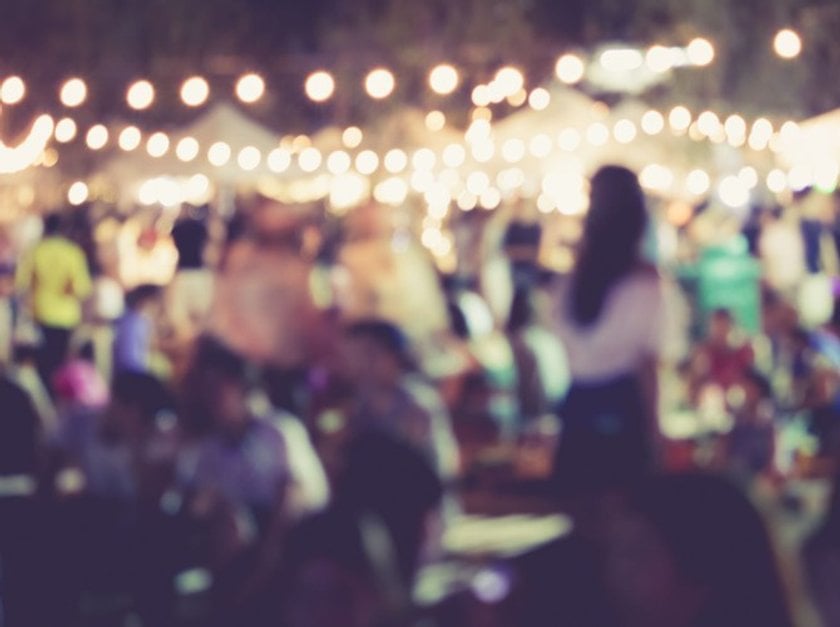
Deadpan
If you’ve ever taken a photography course, you’ve likely been told that centering your subject is a bit of a faux pas. Yet deadpan photography is exactly that, and many famous photographers are adopting this aesthetic. A classic deadpan image is completely devoid of emotion, seemingly capturing the subject without a sense of attachment or deeper meaning. The subject is in the center and is viewed straight on, which is completely different from common photography. It’s often pictured exactly as it would appear if you walked up to it in real life.
Light painting
Light painting is a photographic technique that requires moving a source of light while taking a long exposure. The source of light can be pointed at the subject or directly at the lens of the camera to draw with light. Both techniques provide interesting outcomes.
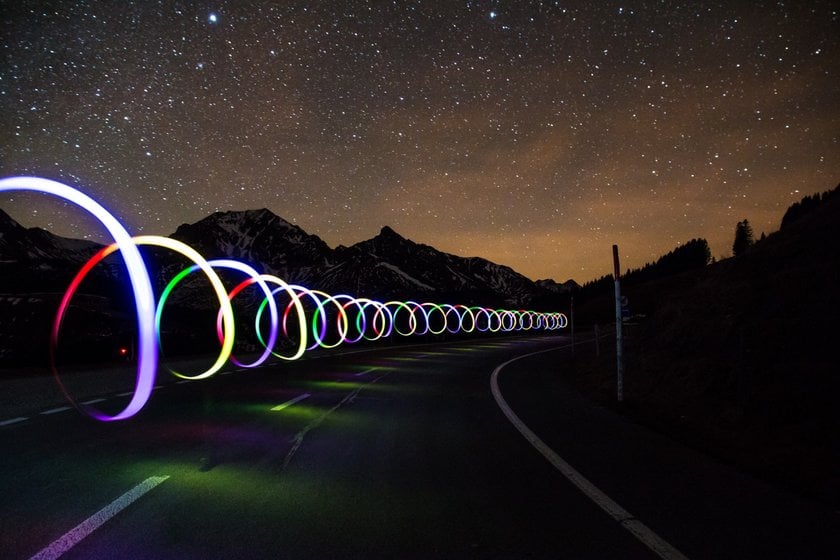
Forced perspective
Forced perspective is commonly used in movies. One good example is in “The Lord of the Rings,” in which the filmmakers were able to make Gandalf huge and Frodo tiny. Interestingly enough, they didn’t combine different clips – rather, they used forced perspective to make one character look large and the other small.
I’m sure you’ve seen photographs of people holding the Leaning Tower of Pisa or holding the sun in their hands. This is forced perspective. People also use forced perspective to make it seem as though they’re holding another person or to make it seem as though the drink they’re holding is bigger than their head. Other examples include photographs where it seems as though someone is hanging from the top of the frame or coming sideways out of a building.
HDR (high dynamic range)
HDR is a style of shooting and post-processing that involves combining three or more exposures to achieve a higher dynamic range. In some situations, it can be nearly impossible for one single exposure to capture the full range of highlights and shadows. HDR solves this problem with bracketing, which is a term for taking a series of images at different exposures in quick succession.
Golden hour
The golden hour is the first hour after sunrise and the last hour before sunset. During the golden hour, the sun is lower in the sky, casting a softer, more diffused light. This means you’ll have less underexposed shadows and overexposed highlights than in the middle of a bright day. The light during this time is also typically a golden hue, warming its surroundings and making everything beautiful.
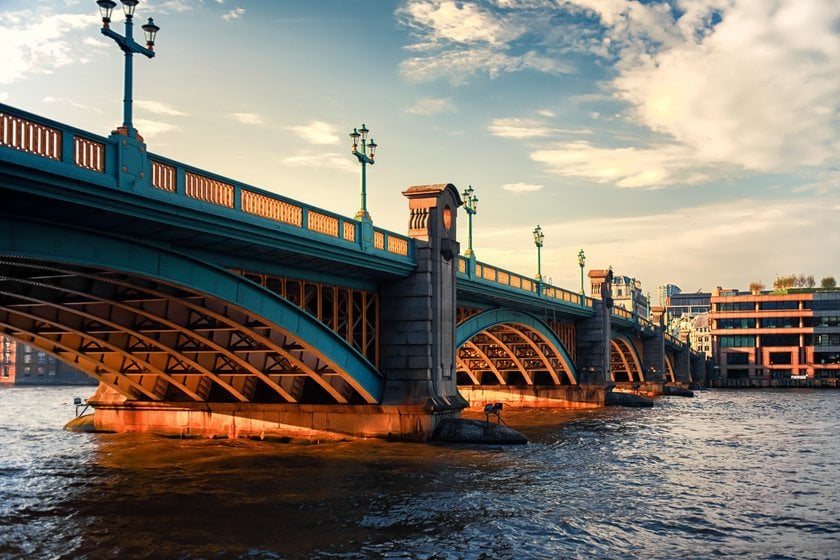
Photobomb
Have you ever taken a portrait only to realize that someone else snuck into the background to make a funny face? This is known as a photobomb. Sometimes photobombing is intentional; sometimes it isn’t. For example, Aunt Linda might unintentionally photobomb her niece’s wedding photo by shoving a piece of cake into her mouth in the background. Or your pet can joyfully jump into the picture and make it even better!
Blown out
If part of an image is blown out, it means that the highlights are so bright they’re completely washed out. If an image is blown out, even adjusting the exposure in a RAW developer won’t bring the details back.
Lens flare
Lens flare occurs when direct rays of sunlight hit the camera lens. The light is reflected inside the lens, resulting in interesting rays, streaks, and circles. While lens flare used to be considered a mistake, many photographers now use it on purpose to add dimension to an image.
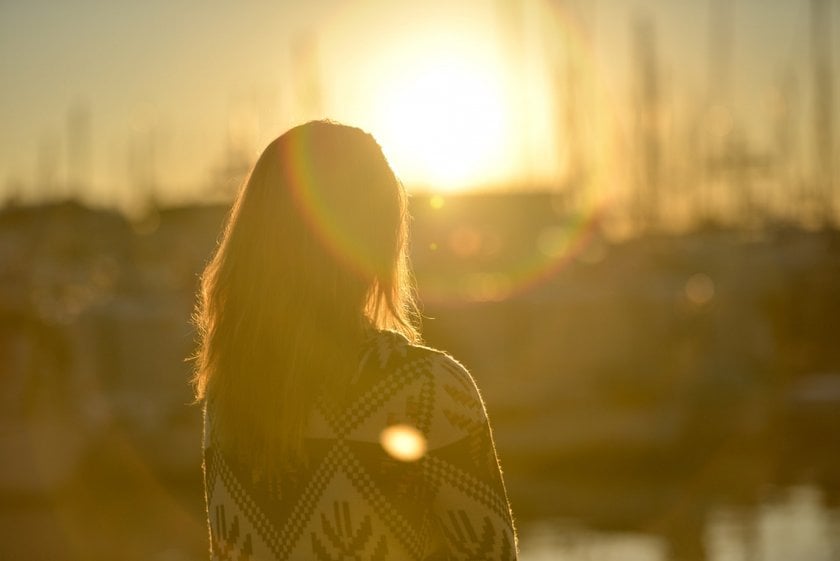
Technical photography terms
You may hear this photography lingo when people are speaking about the more technical side of photography, such as settings in manual mode or types of files.
JPEG
When you shoot with your digital camera and save an image in JPEG format, the processor within the camera takes the information from the sensor and converts it to a color image, compresses it in a way that discards some data (lossy compression), and saves the resulting image to the camera’s memory card. Since JPEGs are compressed, you can fit more JPEG images on a memory card than you can RAW images. You usually have the option of choosing small, medium, or large JPEG files.
The size of the JPEG ultimately affects how large you can print the final image, so if you have enough memory, you should always shoot large JPEGs. Even with large JPEGs, the tradeoff for being able to store more photos on your memory card is reduced image quality. By shooting in JPEG, you’re essentially losing all the raw data that was originally gathered by your camera’s sensor. This makes it more difficult to edit JPEGs than to edit RAW files in post-production software.
RAW
When you shoot with your digital camera and save an image in RAW format, the data from the image sensor is sent directly to the memory card without any processing. It’s raw data, meaning unprocessed – hence the term RAW. Each camera manufacturer has their own RAW image file extension. For example, Canon uses CR2, Nikon uses NEF, and Sony uses SRF. No matter what the manufacturer calls its files, they contain raw data and have many advantages over JPEG.
One main advantage of shooting in RAW is that all original data is saved, meaning there’s no loss in image quality when editing. Most photographers shoot in RAW so they can adjust the color temperature, sharpen the image, control the saturation and contrast, and convert to black and white on their computer with no loss in image quality.
ISO
ISO measures the light sensitivity of the image sensor and is a very important aspect of digital photography. The lower the ISO number, the less sensitive the camera is to light. Higher ISO settings are generally used in darker situations to get faster shutter speeds. Higher ISO often comes at the cost of image quality, however, and can unfortunately result in what’s referred to as noise in your photographs. Noise in digital photographs tends to look like the grain in film photographs, but digital noise can cause color distortion and ruin a photo.
Shutter speed
Shutter speed is the amount of time for which the shutter stays open. If you want to take a photo of something fast, you’ll need to use a fast shutter speed (such as 1/500 of a second) to freeze the action. If you’d like to capture the blur of moving water, you’ll need to use a slower shutter speed (such as 1/20 of a second) to show motion. Slower shutter speeds also come in handy in low-light situations.
Aperture / f-stop
You have to know that aperture is one of the most important settings on your camera. The definition of f-stop, or aperture, is the size of the hole through which light passes to the lens. It can also be referred to as an f/number, and determines the depth of field. A smaller number (such as f/1.8) means a wider opening, which has the effect of blurring the background. A larger number (such as f/16) results in a smaller opening and keeps both the subject and background in focus.
Exposure
Exposure refers to how light or dark an image is. This is determined by the combination of shutter speed, aperture, and ISO, which work together to let a certain amount of light hit the camera’s sensor. Underexposure means a photograph is too dark, while overexposure means it’s too light.
Depth of field
Depth of field refers to the distance before and beyond your focal point that will be in focus. It tells you whether your subject and background can be sharply focused at the same time.
Depth of field is determined by several factors:
- Aperture
- Lens
- Distance to the subject
While a camera can actually only focus on one tiny point, the depth of field determines how much of the image is in acceptable focus according to the human eye. In subjects such as landscapes, a deep depth of field is often desired so the entire scene appears in focus. Often, you’ll see photographers use a shallow depth of field in portraits to blur the background and reduce distractions from the subject.
White balance
White balance settings allow you to adjust the color temperature so objects that appear white in person are actually rendered white in your photograph. Depending on the brand and model of your camera, you should have several preset white balance settings. For example, a Canon T3i has seven presets: auto white balance (AWB), daylight, shade, cloudy, tungsten, fluorescent, flash, and one custom white balance setting.
You can use the auto white balance setting most of the time. White balance is not as important as learning the exposure triangle, especially if you shoot in RAW. If you shoot in RAW, you can easily adjust the white balance in post-production software such as Luminar 3.
Spot metering
Spot metering allows you to meter the light from a very small zone. Usually, the default zone is the very center of the image. Most DSLRs and mirrorless cameras will allow you to choose the zone you want to meter from. This tends to be helpful in high-contrast conditions, where your subject can otherwise be too bright or too dark depending on the rest of the scene.
Center-weighted average (Canon) / center-weighted metering (Nikon)
Center-weighted average (for Canon users) or center-weighted metering (for Nikon users) meters the light from a small circular area in the center of your image. This area is larger than the area used for spot metering, and depending on your camera model, you can change how large or small this circle is. Since most subjects fall within the center of an image, this is the most widely used metering mode.
Evaluative metering (Canon) / matrix metering (Nikon)
Evaluative metering (for Canon users) or matrix metering (for Nikon users) divides the entire scene into zones, then takes the average reading of all of these zones to create an average exposure. Shadows and highlights are taken into consideration, as is the focal point and the distance between the subject and background. Depending on your camera model, this type of metering can break up the scene into a couple of zones or a hundred.
Photography terms that relate to the photographer
This list of photography terms is often used to describe a photographer or their actions.
Shutterbug
The shutter is the curtain that rests in front of the camera sensor. It stays closed until you press the shutter release to take a photograph, which means it opens and closes automatically. A shutterbug is someone who has their camera at the ready at all times. They can’t go out to brunch or on a hike without taking photographs of everything they see around them. They may also constantly be posting these photos on social media.
Chimping
Chimping refers to looking at the LCD screen directly after taking a photo. Chimping is a bit of a joke among photographers, as the term is associated with the “ooh, ahh” noises that photographers sometimes make when looking at an image they’ve just captured. These noises are sometimes followed by ape-like hand motions used to call others to look at the image.
ATGNI
This acronym means All The Gear, No Idea. It refers to people who are constantly upgrading their equipment to the latest camera bodies, lenses, and tripods, yet have no idea how to properly use any of them. More often than not, these people use their extremely expensive equipment on automatic mode and simply don't understand how to use it any other way.
Photography terms that relate to equipment
This related to photography terms are often heard when people are describing photography equipment such as camera, lens, crop sensor, and so on.
Full-frame / crop sensor
There are two types of cameras: full-frame and crop sensor. The sensor of a full-frame camera is equivalent to a 35mm film camera. A simple way to determine whether a DSLR camera is full-frame is by using the same 50mm lens on both a film camera and on the DSLR. Look through the viewfinder: does the focal length appear the same through both cameras? If so, the DSLR is full-frame.
A crop sensor is smaller than a full-frame, which means that the sensor is actually cropping the edges of the frame. The same 50mm lens on a crop sensor will show a more zoomed in version of the same scene. This means that wide-angle lenses will be slightly less wide when used on a crop sensor camera as opposed to a full-frame.
Because full-frame cameras have larger sensors, they often perform better in low-light conditions. On the other hand, crop sensor cameras are often less bulky and less expensive than their larger counterparts.
Fast or slow glass / lens
A lens is said to be fast if it has a wide maximum aperture, such as f/1.8 or f/1.4. It’s said to be slow if it has a narrower maximum aperture, such as f/4. A lens with a lower f/number allows for a faster shutter speed. Lenses are sometimes referred to as glass in phrases such as vintage glass, slow glass, and fast glass.
Nifty fifty
Every major camera manufacturer carries a 50mm lens in their lineup. While a 50mm f/1.2 might break the bank, an f/1.8 is fast and affordable while still producing quality images. It’s known as the nifty fifty because a 50mm is arguably the most useful focal length for everyday shooting.
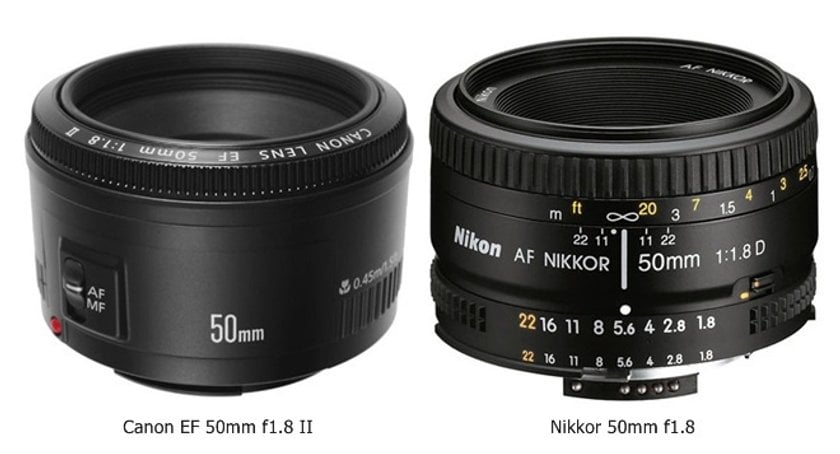
Photography terms that relate to lighting
Good lighting is an essential part of getting a good picture. Studying the art of photography, you can't avoid this aspect. Let's look at the basic related to lightning photography words and phrases in this section.
Ambient
Ambient is the light present in the frame. It can be either natural or artificial. By mixing ambient light with the flash, the photographer gives depth to the image.
Gobo
Gobo is a special tool that can be used to achieve a shaped shadow effect. For example, this can be achieved with a perforated curtain. If this effect is used properly, very unusual and beautiful results can be achieved.
Long exposure
Long exposure is a technique in which the image is exposed for a long time. Landscape photographers use slow shutter speed when lighting is low. The effects of long exposure can be used to achieve an artistic blurring of moving objects.
Continuous lighting
Continuous lighting is the light source with a constant output over a long period. It is usually used when filming videos where the illumination mustn't become lighter or darker.
Slang and photography jargon
Slang words and jargon are as important as basic terminology. Using slang for the photographer will make you feel more "in touch" with the professionals. You no longer have to pretend that you understand what the photographer is saying and feel so foolish! Let's look at some interesting expressions associated with photography.
Artifact
An artifact is something that spoils the quality of an image, such as an unfortunate lens flare or an area of distortion. It can be caused by improper functioning of the camera.
Cam-Jam
Cam-Jam is someone who knows absolutely nothing about photography but always takes amazing pictures. Lucky, right?
Gump
Another catchy photography term is Gump. It means a versatile photographer who successfully captures various types of photos. Whether it's portrait or street photography, Gump can handle anything with ease. Is it related to another word? Yes! Interesting fact, the word itself comes from the film Forrest Gump.
Grip and Rip
This expression means that you take a lot of photos for nothing, without even trying hard enough. Flowers in the park? Cute animals? Food in a restaurant? You need to take pictures of everything, even if you never look at the pictures later.
Other useful photography terms
Uncle Bob
Uncle Bob refers to that one inevitable guest at every wedding who carries around a DSLR and tries to get a shot from every angle, oftentimes getting in the way of the actual photographer. And yes, many times it’s someone’s uncle.
Machine gunning
Machine gunning is when you put your camera on continuous shooting mode and hold down the shutter. If you try this on your own camera, you’ll soon understand why it’s called machine gunning.
Pixel peeper / pixel peeping
A pixel peeper is someone who checks image quality by zooming very far into the photograph, either on the camera’s LCD screen or in a post-processing program. Pixel peeping means scrutinizing image quality down to the pixel.
Prime
A prime lens has a fixed focal length, such as 50mm, 85mm, or 28mm. This is different from a zoom lens, which can move between different focal lengths.
Selfie
A selfie is simply a self-portrait, often taken by holding the camera or phone at arm’s length. It's one of the most popular types of photography nowadays; you hardly know anyone who's never done it. Some people use tripods to make selfies.
Sharp / soft
The terms sharp and soft can refer to either a lens or an image. A lens can be considered sharp if it constantly produces crisp, in-focus images. A photo can be considered sharp if it has a lot of detail. Soft is the opposite, meaning that the lens or photo lacks focus and detail.
Noise
Noise often appears in an image in low-light situations or at higher ISOs. Whereas film grain was often highly sought after, digital noise is less appealing and can show up in the form of multi-colored digital artifacts.
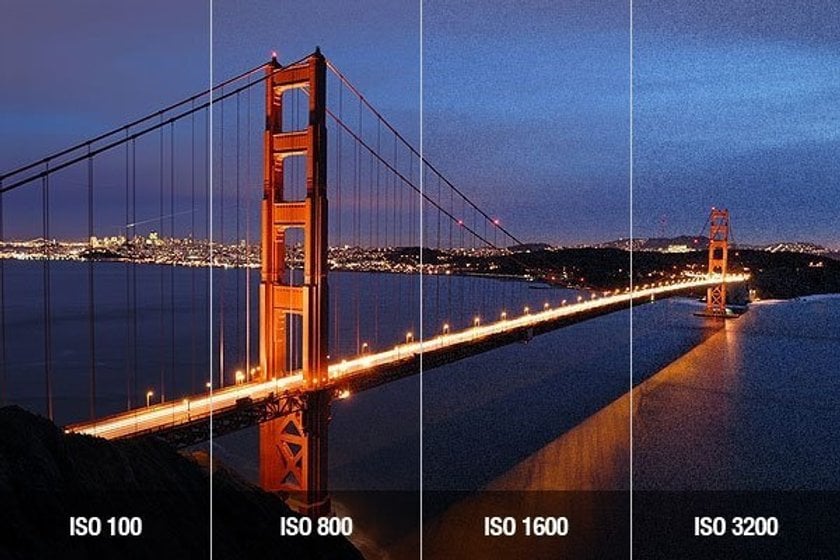
Straight out of camera (SOOC)
SOOC refers to an image that has not yet had any post-processing done to it.
Frame
You may hear photographers talking about filling the frame in regards to image composition. The frame is the image itself – what you can see through your viewfinder. To fill the frame means to get closer (or zoom in) on your subject so it occupies a good chunk of the viewfinder.
Rule of thirds
One of the most common composition techniques is the rule of thirds. This rule operates off the idea that subjects appear more dynamic when they’re placed off-center as opposed to in the middle of the frame.
Think about your image in terms of a grid. This grid is composed of two vertical lines and two horizontal lines that evenly divide the scene into nine rectangles.
When photographing using the rule of thirds, try to place horizontal and vertical lines on their corresponding horizontal and vertical lines within this grid. For example, if you’re photographing a horizon, try placing it in the bottom third or top third of the photograph as opposed to in the middle.
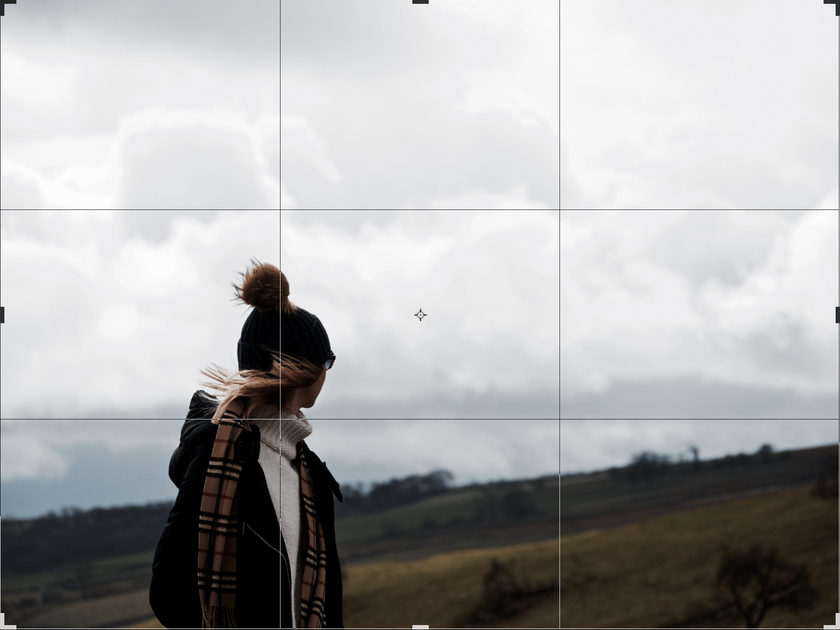
Hot shoe
Take a look at your camera. On the top of the camera, right above the viewfinder, you’ll see a small square of metal with little rails on either side. This allows accessories to be locked into place. An external flash is the most common accessory to be placed onto a hot shoe, followed by an external microphone.
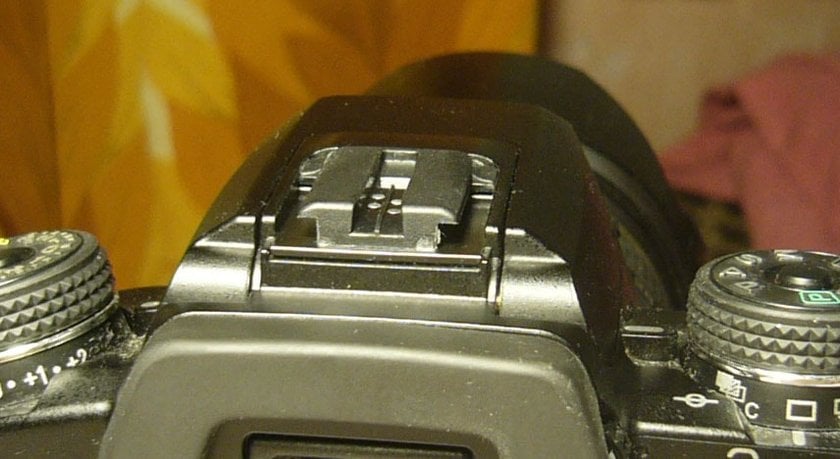 Redline [CC BY-SA 3.0 (http://creativecommons.org/licenses/by-sa/3.0/)]
Redline [CC BY-SA 3.0 (http://creativecommons.org/licenses/by-sa/3.0/)]
Candid
What does candid mean? A candid photograph is an image of people taken at an unexpected moment. Candid photographs are not posed, and many times the subjects are unaware they’re being photographed. When they are aware, the photographer waits for an opportune moment to capture the subject in their most natural state.
Advanced yet easy-to-use photo editor
Get Luminar Neo NowConclusion
While some of these photography-related words are more slang and some are more technical, knowing all of them will help you get a leg up in the professional world. Some of these definitions were probably familiar to you, some were interesting (and sometimes even very funny) new information. Now all you have to do is pack your gear and head out to create your very own bokeh balls with your nifty fifty during the golden hour! And if you need any practical help with post-editing, Luminar photo editing software is here for you.

![Photography Terminology You Should Know [2025 Updated] | Skylum Blog(3)](https://media.macphun.com/img/uploads/uploads/skylum/blog/macbook-for-promo.png?w=50&q=50)
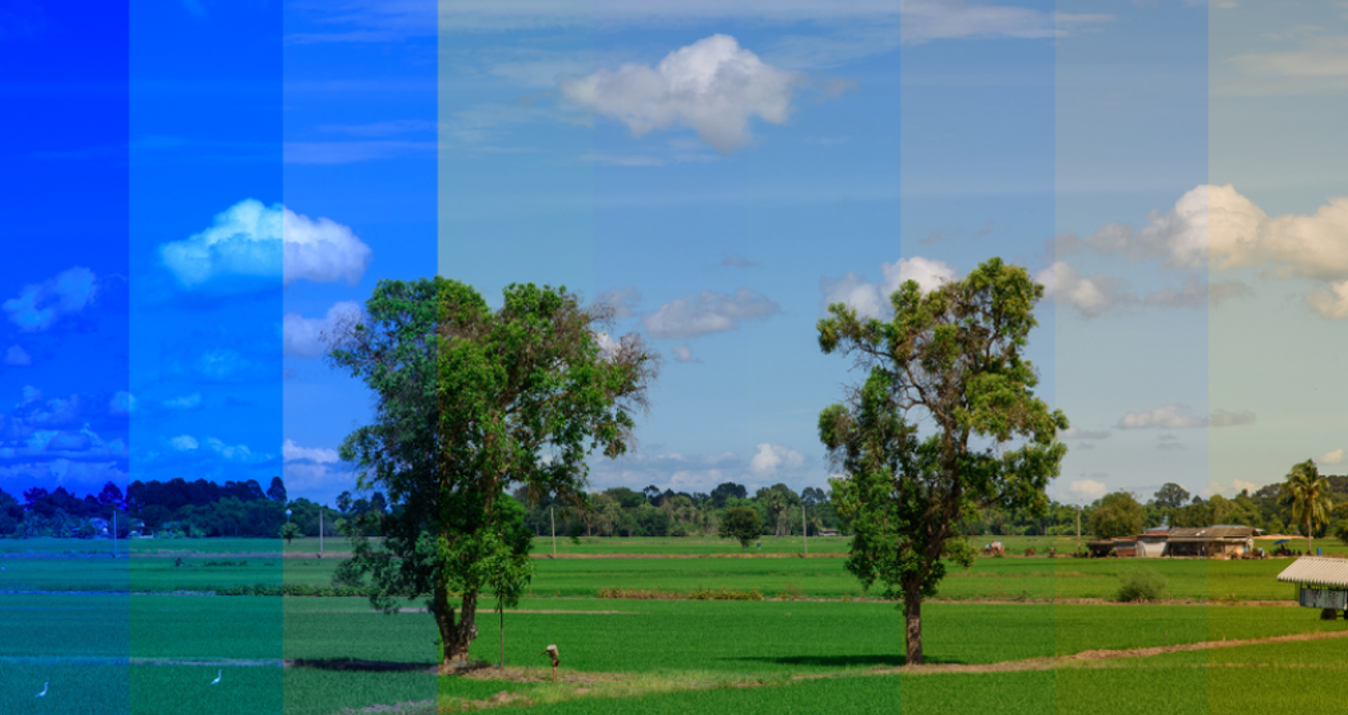


![Photography Terminology You Should Know [2025 Updated] | Skylum Blog(4)](https://media.macphun.com/img/uploads/uploads/skylum/neo/logo/neo-logo.png?w=240)